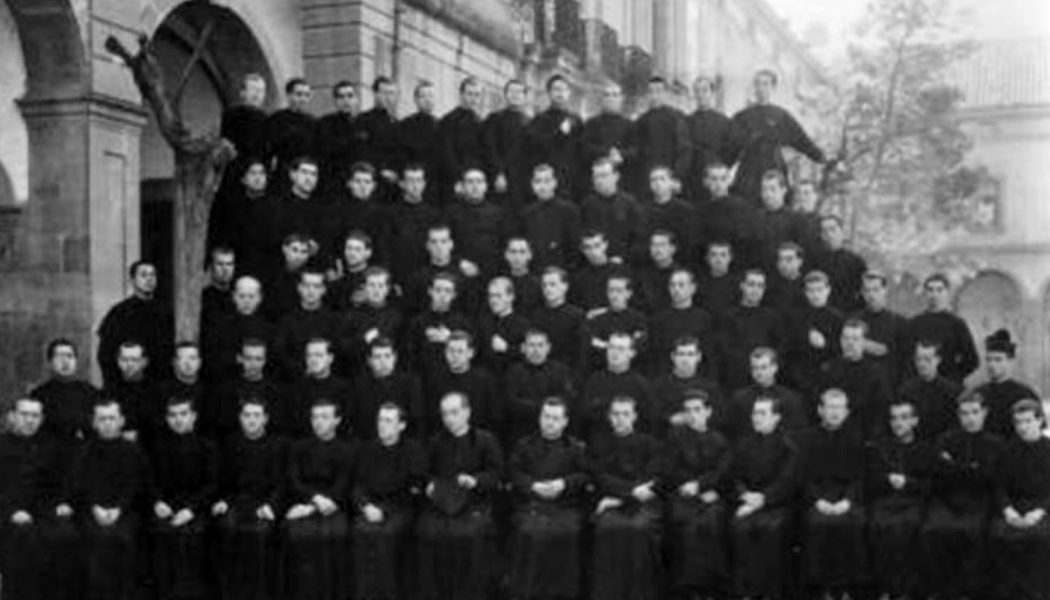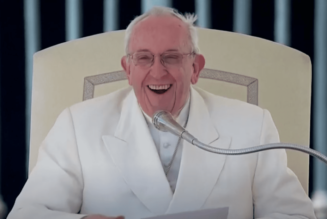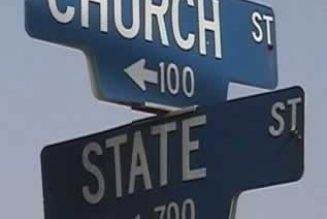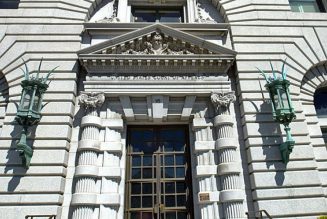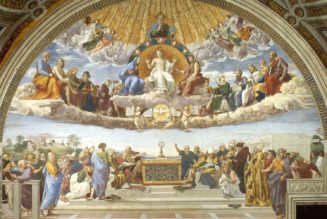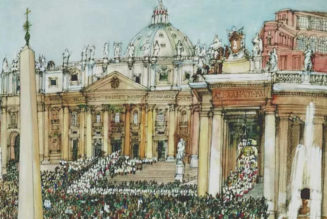At various times in history, martyrdom has been a real possibility for Christians. One such time was for Catholics during the Spanish Civil War of 1936-39, particularly those who were members of the clergy.
The Spanish Civil War marked the most violent and prolonged spasm of the sort of religious persecution that had afflicted Spain for the last 100 years. In 1931, the Spanish monarchy ended and a Republic was established in its place. Still the political scene remained an unstable contest of Left and Right.
By July 1936, this division erupted into a bloody civil war when the left took control of the Republic. Opposing the new leftist government, the Spanish Army, calling themselves Nationalists, revolted and chose Generalissimo Francisco Franco as their leader. They spent the next three years locked in combat with the Loyalist or Republican forces, which were controlled by anti-clerical Communists, Socialists and Anarchists.
The Republic had been virulently anti-Catholic even prior to outright civil war. Among other things, the Republican Constitution submitted Catholic worship to civil authority and considered all religious orders a danger to the security of the State. In many places, the anti-clerical press invited the people “to eliminate the clergy physically.” The leftist government fanned this hatred of Catholicism until it burst into violence in July 1936. In the last 10 days of that month alone, 861 priests were murdered.
During the course of the Spanish Civil War, 13 bishops, 4,184 diocesan priests, 2,365 religious priests and brothers, 283 nuns and 249 seminarians were assassinated for their religion, almost all of them by the Communists.
This violence spread across Spain, including the town of Barbastro in the northeastern section of the country. Barbastro was home to a missionary house of the Claretians, formally known as the Missionary Sons of the Immaculate Heart of Mary. Until 1934, it had served as a minor seminary when it was designated as a house for students in their final course in theology.
On July 20, 1936, the Communists controlling Barbastro stormed the gates of the Claretians’ house prompted by rumors that they were hiding guns. Such Communist-purveyed rumors were common at the time; they alleged monasteries were fortresses with mysterious ins and outs, pits and hidden trapdoors.
The Claretians were no strangers to such rumors. Their founder, St. Anthony Mary Claret, commented on them during another revolutionary, anti-clerical period of Spanish history, the 1860s. In his autobiography, St. Anthony quotes from contemporary left-wing anti-Catholic propaganda against the clergy:
“[The Catholic clergy] neither study nor teach morality, for their time is taken up striving to satisfy their ambitions and unbridled appetites. The Gospel they never preach, but busy themselves without intermission in political schemes, for they are the originators of the most scandalous plots and the most loathsome artifices.
“Whenever you see or hear of an infamous intrigue, an atrocious calumny, or of vile conduct, you may safely conclude without fear of mistake that these are the works of a Catholic priest.”
These sentiments had not faded among the Spanish revolutionaries over the years. The region of Spain where Barbastro lay had a particularly revolutionary history.
Search as they may, the Communists who stormed the missionary house found no weapons. They left, only to be replaced by an angry mob demanding the immediate killing of the “blackbirds.” The leaders of the town revolutionary committee acquiesced in part, ordering the arrests of the superior, Father Felipe de Jesús Munárriz, the prefect, Father Juan Díaz, and the administrator, Father Leoncio Pérez.
As they bid goodbye to their confreres, a seminarian asked whether, in the light of the prevailing political climate, they should dress in civilian clothes or cassocks. In what proved to be his last order to his seminarians, Father Munárriz ordered firmly, “In cassocks!” They were then led off to the city jail by Communist riflemen.
Shortly afterward, the revolutionary committee ordered the remaining Claretian priests and seminarians be confined to the auditorium of a Piarist house on the town square. They meekly and humbly complied, secreting with them a supply of consecrated hosts. Eyewitnesses recall that the religious were led into town in twos and threes, as recollected “as if they were returning from receiving Communion.”
This was indeed the case, for at the last moment prior to leaving the missionary house the seminarians received the Blessed Sacrament, lest the consecrated hosts be desecrated by the Communists.
From that day until their executions the Claretians — more than 50 of them — would live in the Piarist auditorium, a room only 25 meters long and six meters wide. The auditorium was lower than the town square itself; five large windows opened at street level, exposing the clergy-prisoners to the insults of the mob outside.
They spent their days reciting their prayers either individually or in small groups, confessing frequently, receiving the consolation of Holy Communion during their first days, and praying intensely for themselves and for their soon-to-be-executioners.
They suffered all the miseries of imprisonment: sleeping on the floor, not being able to wash, experiencing thirst because they were given very little water, and having to put up with the affronts of their jailers, who amused themselves at their pious prisoners’ expense by staging mock executions and repeatedly introducing prostitutes among them in an attempt to weaken their moral resolve. Additionally, they were continually exposed to the gaze, mockeries and insults of curious onlookers.
Deprived of proper writing materials, they wrote their thoughts down on various scraps of paper which they either hid or handed on to people they trusted. For lack of paper, they scribbled messages of farewell anywhere they could — on auditorium benches, on the underside of a piano bench, even on the walls. What these young men transcribed are deeply moving testimonials to their vibrant and indomitable faith in God:
“Beloved Congregation: The day before yesterday … six of our companions died with a generosity befitting martyrs. Today … 20 more have won the pain of victory. And tomorrow … the remaining 21 of us expect to die. Glory be to God! We spend the day encouraging one another for martyrdom and praying for our enemies … When the moment comes for them to announce the next victims, we all feel a holy serenity and an eagerness to hear our own name called, so that we can join the ranks of the chosen. We have awaited this moment with holy impatience, and when it came we saw some of the chosen kiss the cords that bound them, while others addressed words of forgiveness to the armed mob.”
“When they were driving off with them in the van, we could hear them shout, ‘Long live Christ the King!’ We all die happy, with no regrets or misgivings. We all die praying God that the blood that falls from our wounds will not cry out for vengeance … we are dying because we wear the cassock, and the martyrs of tomorrow are going to die precisely on the day we were invested in it.”
Twenty-three-year-old theology student Salvador Pigem Serra penned a note to his mother on a scrap of paper: “Mama, don’t cry. Jesus is asking for my blood; I am going to shed it out of love for Him. I will be a martyr; I’m going to heaven. I will be waiting for you there.”
On the underside of a piano stool, a seminarian penciled in capital letters “Christe, Morituri te Salutant” (Christ, we who are about to die salute Thee.) On another part of the stool, 23-year-old Juan Sanchez Munárriz wrote, “My heart overflowing with holy joy, O confidently await the crowning moment of my life, my martyrdom, which I offer for the poor who are going to breathe their last on the day I shed my blood for remaining faithful and loyal to my divine captain, Christ Jesus. With all my heart I forgive all who have wittingly or unwittingly offended me. I die content.”
Twenty-two-year old seminarian Tomás Capdevila Miró’s message: “As Jesus on the cross died forgiving his enemies, I die a martyr, forgiving my enemies with all my heart and promising to pray especially for them and their families. Farewell.”
And a message repeated on many of the written mementoes that still survive and echo of Our Lord on the Cross: “Domine, dimitte illis, nesciunt quid faciunt (Lord, forgive them for they know not what they do.)”
The mettle of these young men was demonstrated by Pigem Serra. It turned out that one of the guards used to work for Pigem’s uncle, and now offered to smuggle Pigem out.
“And, what about my companions? Can you get them out, too?” asked Pigem.
“No, just you,” replied the guard.
“Then I can’t accept. I’d rather stay and be a martyr with them.”
The first executions were of the three superiors originally seized and jailed by the Communists. They were taken to the cemetery outside of town, along with a group of laity and other priests. Among the laymen was a Gypsy nicknamed “el Pele” who had been arrested a few days before for trying to defend a priest being attacked for carrying a rosary. There against cold cemetery walls, these brave Catholics fell before a fusillade of Communist bullets.
Next was group made up of the eldest six. Around 3 a.m. on Aug. 12, Fathers Calvo, Cunill, Pavón and Sierra, Mister Claria and Brother Chiravas were called and came forward offering no resistance. The others watched as their hands were tied behind their backs and as they were lashed together in pairs. By signs they asked for a last absolution, which young Father Secundino Ortega García gave them. They were taken out and hoisted into a waiting van and executed a short time later.
On August 13, “while the cathedral clock was striking midnight,” the Communist guards burst into the auditorium. Marian Abad, known as “The Undertaker” for his butcheries, read off a list of 20 names: one priest, 17 students and two brothers. Abad was known for saying that if those to be executed numbered fewer than 20, the trip wasn’t worth his trouble.
All came forward meekly, following the same ritual. They made their farewells, and 24-year-old Father Luis Masferrer Vila, the only priest left, gave them general absolution. Their hands were bound with ropes “still stained with the blood of other martyrs” and tied together two by two. Those who remained saw them shouting as they set out for the graveyard, “Viva Christo Rey!” after which they began singing. Finally, “at 20 before one in the morning of the 13th, we could hear perfectly the shots that carried off our brothers and opened the gates of heaven to them.”
A group of farm hands, hiding in a nearby barn, watched helplessly as the execution took place along the road to the neighboring town of Berbegal. According to these witnesses, the young seminarians — none older than 25 — were lined up along the road, illuminated by the glaring headlights. As the Communist militiamen trained their rifles on them, Marian Abad bellowed, “You still have time. Don’t you want to come with us to fight against the fascists?”
“Long live Christ the King!” replied the Claretian students.
Why won’t you say, ‘Long live the Revolution?’” asked Abad.
“Long live Christ the King,” the Claretians answered again.
The seminarians knelt down with their arms in the form of a cross, still shouting “Viva Christo Rey!” until they were silenced with a volley of guns.
The last group of 20 were brought to their martyrdom on Aug. 15, the feast of the Assumption of Mary, which was the anniversary of profession for most. The Communists entered the auditorium and read the roll of the condemned. Toying with the same blood-stained cords, the captain asked the Claretians, “Where would you rather go: to the front to struggle against fascism or to the firing squad?”
The Claretian prisoners responded to their captor: “We would rather die for God and for Spain.”
As their brothers in Christ before them, they were bound and led into the van, shouting their allegiance to Christ the King and singing their faith on the drive to the cemetery, even as the Communist guards attempted to silence them with threats and blows from rifle butts.
As their brothers in Christ before them, they were bound and led into the van, shouting their allegiance to Christ the King and singing their faith on the drive to the cemetery, even as the Communist guards attempted to silence them with threats and blows from rifle butts.
As they trundled to the execution sight, “The Undertaker” made them the same offer: “If you come and fight the fascists and give up your religion, we’ll spare your lives.”
When met with stony silence, Abad cursed and said, “What a pity men this tough aren’t fighting on our side!” This last group died as their brothers had, kneeling with their arms out in cruciform, praising Jesus and praying for their executioners.
As for the two young seminarians who had been staying in the town hospital before their transfer to jail, their names were called after midnight on August 18. They knelt and confessed their sins to a priest who was imprisoned with them, before being led off with several other priests and Catholic laymen to martyrdom without even the pretense of a trial.
Their reputation for sanctity began to spread at once. Even before the last groups were martyred, the first groups were regarded as martyrs by those who followed them. And all of them were regarded as such by the faithful of Barbastro.
When the storm had passed, their bodied were sought out, identified, gathered together and transferred in 1939 to a special section of the cemetery itself, and later, when they were canonically recognized, they were transferred to the Church of the Heart of Mary (1952) in Barbastro where many of them had prayed.
The canonical process began soon after and proceeded slowly through all the canonical steps. After many years and meetings, the process was finally finished. Pope St. John Paul II, accepting the petition of the Congregation for the Causes of the Saints, ordered that the decree of martyrdom of the Servants of God should be drawn up; Felipe de Jesús Munárriz and 50 companions of the Congregation of the Missionary Sons of the Immaculate heart of the Blessed Virgin Mary who had died because of hatred for the Faith in 1936.
John Paul asked that this decree be published on March 7, 1992. The beatification was held Oct. 25, 1992, the day following the feast of their founder, St. Anthony Mary Claret.
In today’s world, where so much of the Faith is questioned and often denied, the example of these heroic young men — all between the ages of 20 and 25 — who preferred a painful death to a life of compromise, should inspire every Catholic to live a life committed to Christ, come what may.
The heroic example of these modern-day martyrs — during their 25-day captivity and their fortitude before the firing squad — is an inspiring and sobering reminder that martyrdom did not end with the Roman persecutions and that any of us may be called at some time to make this supreme sacrifice of faith for Our Lord.

Join Our Telegram Group : Salvation & Prosperity
